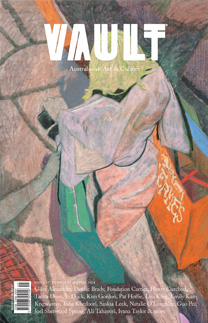Stuart
Ringholt:
Committing
Time
What has Stuart Ringholt been up to in the last few years? Building another clock. Thinking of his future.
In the beginning, our sense of time was keyed to nature’s obvious rhythms. Day and night, the tides, the waxing and waning of the Moon, seasons, and years regulated our work, play, sleep, and prayers. Our first timepieces were sticks in the ground, whose shadows tracked the movement of the Sun. When we invented mechanical clocks, their faces were based on sundials. As technology evolved, balance-spring and pendulum clocks gave way to quartz-crystal and atomic ones, as analog gave way to digital. With time, time has become increasingly abstract. Once its measure was deduced from the familiar macrocosm (a second was a 60th of a 60th of a 24th of a mean solar day), but it is now calibrated with the invisible microcosm (a second being the duration of 9,192,631,770 periods of the radiation corresponding to the transition between the two hyperfine levels of the ground state of the caesium-133 atom at zero kelvin). Clocks once reflected natural rhythms; they have now supplanted them. These days, when time is money, we rock around the clock and slave to the rhythm. From the worker crucified on his clock-machine in Metropolis (1927) to workers being paid in seconds, minutes, and hours of life in In Time (2011), clocks belittle us, symbolising our alienation from nature and our true selves. No wonder people fear them. They call it chronomentrophobia.
In 2013, Melbourne artist Stuart Ringholt decided to explore his love–hate relationship with time, becoming a clockmaker. It was a big gear change. Before that, Ringholt was largely known as a performance artist. He got our attention with his 2006 self-help memoir, Hashish Psychosis: What It’s Like to Be Mentally Ill and Recover. His subsequent . .. Subscribe to read this article in full

























